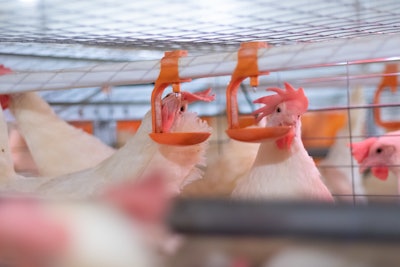
When 2022 began, I thought implementation of Proposition 12 in California would be the year’s biggest opportunity for U.S. egg producers. Boy, was I ever wrong.
2022 kicked off with the implementation of legislation banning the sale of eggs produced by hens housed in cages in California and Massachusetts. My expectation was that implementation of these cage-free egg mandates would be the most significant disrupter of the year for U.S. egg markets. I wasn’t alone in this belief; U.S. egg produces who responded to an Egg Industry Insight survey conducted in the late summer of 2021 also predicted significant disruption to egg markets after these cage-free egg mandates took effect on January 1, 2022.
But 2022 wound up throwing more curveballs at the U.S. egg industry than Sandy Koufax threw in his entire career. These curveballs, or as business schools like to call them “opportunities,” will linger into 2023 and will need to be dealt with. Here is my take on the opportunities that U.S. egg producers will face in 2023:
1. Highly pathogenic avian influenza (HPAI): On the day that I am writing this, a glass-half-full person might say the U.S. egg industry lost fewer hens and pullets to avian influenza in 2022 (38.3 million head), than it did in the 2014-2015 outbreak (approximately 43 million head). A glass-half-empty person might say that the layer industry has invested heavily in structural biosecurity enhancements since 2015 and it has still lost nearly as many birds as during the worst outbreak in North American history – and the outbreak isn’t over yet.
HPAI is endemic in wild birds in North America and Europe and will be a persistent challenge for poultry producers going forward. Producers will need to remain vigilant and the cost increases, in capital and labor, will not go away. Biosecurity programs need to be monitored and managed constantly. The path of least resistance will be followed if compliance with procedures is not monitored, encouraged and rewarded/enforced.
2. COVID-19: The pandemic exacerbated existing labor shortages, drove up wages and created supply chain shortages that helped to fuel inflation. Major capital construction projects, like building a new cage-free farm or converting an existing farm to cage free need to stay on schedule. The supply chain issues created by the COVID pandemic drove up costs for materials and freight. At times, freight costs for importing containers of goods into the U.S. rose up to five times pre-pandemic rates. Total construction costs ballooned, which extends the time required for these investments to pay for themselves. Expect the pace of cage-free conversions to be slower going forward.
3. Recession/inflation: First, the good news: Gross domestic product (GDP) growth in the U.S. was positive in the third quarter of 2022 after being negative in the first two quarters, so technically the economy was not in a recession as we approached the end of calendar year 2022. The bad news is that inflation is still running at nearly an 8% annual rate and the money supply will need to contract and interest rates continue to rise to get inflation back to no more than the Federal Reserve’s target rate of 2%. Before interest rates return to historical norms, the cost of borrowing will increase, making capital for cage-free conversions even more costly.
4. Future cage-free egg purchase pledges: The two largest grocers in the U.S., Walmart and Kroger, each backed away from prior 100% cage-free egg purchase pledges in the summer of 2022. This means cage-produced eggs will be available at retail in many U.S. states for several years. Consumers, not activist groups, will make decisions on how at least some of the U.S. hen flock will be housed. Who an egg producer sells to and what states the customer does business in will determine whether a farm will go cage free or keep its cages.
5. State legislation: A total of 10 U.S. states have passed legislation mandating sales of cage-free eggs, either now or at some future date. Egg sales in Washington state are required to go cage free on January 1, 2023. Washington state’s 7.74 million residents make up about 2.33% of the U.S. total. The transition in Washington, and the upcoming transitions in Oregon and Nevada on January 1, 2024, should proceed relatively smoothly from an egg availability standpoint based on the experience with California and Massachusetts in 2022.
The next real challenge will come on January 1, 2025, when cage-free egg sales mandates are implemented in Michigan, Arizona, Utah and Colorado, as these states have a population of 26.48 million people – around 8% of the U.S. total. Additionally, many of the future cage-free egg purchase pledges made by foodservice, retail and food processing companies have completion dates in 2025.
Based on these five opportunities, 2023 promises to be an exciting year for U.S. egg producers, and we haven’t even mentioned the ongoing high grain prices and Russia’s invasion of Ukraine. Make sure to fasten your seat belt; I don’t see any way we can avoid the turbulence.


















